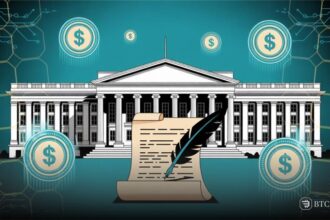Blockchain developers across ecosystems, including Ethereum, introduced major updates in July. The Bitcoin community focused on OP_CHECKSIGFROMSTACK (CSFS) and its possible pairing with CTV. The combination may help transition the Lightning Network to Point Time-Locked Contracts and support lighter transactions.
Ethereum developers, meanwhile, raised the mainnet gas limit and proposed EIP-7983 to improve transaction efficiency and security. But developers raised concerns.
Some worry about standardization gaps and legacy script compatibility. Others argue about trade-offs in vault safety and address reuse. Debate intensified after a public letter pushed for CSFS integration, but key contributors asked to let technical consensus lead.
Ethereum moved forward with its Fusaka upgrade. Developers plan release candidates by September 1 and target the mainnet upgrade by November 5. They also started planning the Glamsterdam upgrade. Key proposals include ePBS, shorter slot times, and parallel execution improvements.
Ethereum increases mainnet gas limit to 45 million
In another update, Ethereum raised the mainnet gas limit to 45 million. Developers also drafted EIP-7983 to cap per-transaction gas use at 16.77 million. The aim is to stop denial-of-service risks and improve efficiency. Polygon executed its biggest upgrade since 2020. Heimdall v2 switched core components, cutting finality to five seconds and removing older systems.
Solana also made key moves. Jito Labs and the Jito Foundation launched a new Block Assembly Marketplace. It lets validators and developers control block order and share revenue. Solana raised its compute unit limits and proposed further increases. BNB Chain pushed performance higher.
Two major upgrades trimmed block time and cut finality by more than half. Daily transactions reached over 17 million. Community proposals introduced new consensus paths and faster message propagation. Binance added support for FastFinality, reducing confirmation time from 15 blocks to five.
Base launches BaseApp with all-in-one features
Base launched BaseApp, combining payments, feeds, mini-apps, and videos in one interface. Hyperliquid launched CoreWriter, connecting its trading engine and smart contracts without external tools. Cosmos paused its EVM platform plan, shifting focus back to interchain services.
Other highlights included the launch of multicast features by DoubleZero, SonicCS 2.0 testing from Sonic Research, and a $40 million exploit on GMX. SonicVM also delivered major performance gains with faster gas processing. Additional developments came from Anoma, Tac L1, Mira Verify, and the Conflux upgrade.
Anoma introduced an intent-based testnet. Tac linked Telegram to EVM dApps. Mira focused on AI content truth checks. Conflux prepared for a high-speed public chain to handle real-world assets and AI workloads. Each update shows a steady push for better blockchain tools, faster systems, and broader adoption.







